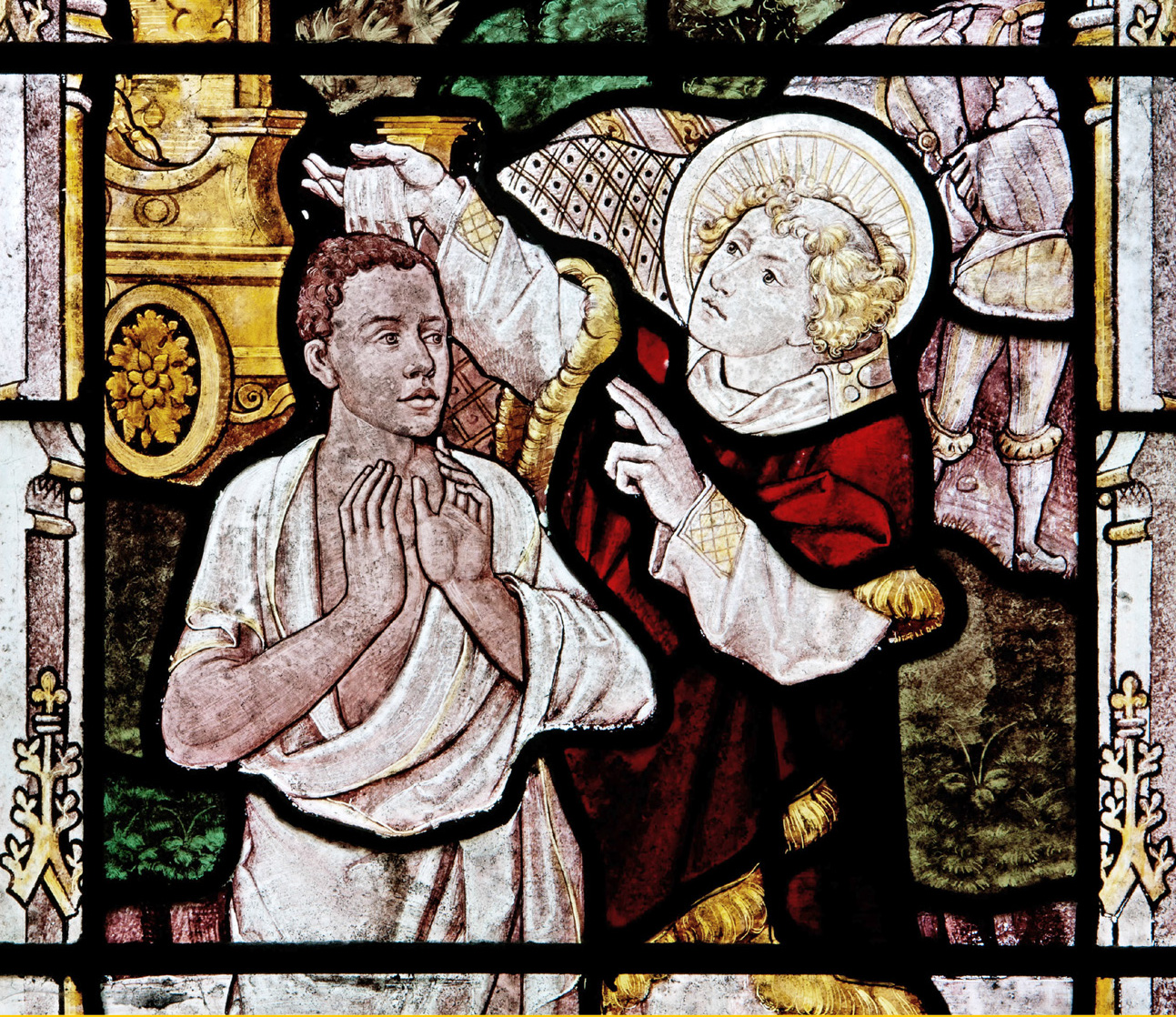
IN BRIEF
Acts 7:54–8:40
God’s word is for everyone
c.32–35 CE The countryside around Jerusalem.
Saul of Tarsus A Hellenistic (Greek-speaking) Jew later known as Paul. At this stage, he is a diehard persecutor of the fledgling Church.
Philip One of the “Seven” appointed to oversee the distribution of food to widows in Jerusalem. He spreads the word of God.
Ethiopian official Chief treasurer to the Queen of Ethiopia; a eunuch who is baptized by Philip.
Life for most of the believers in Jerusalem is relatively peaceful in the period after Pentecost, despite some conflicts between the Sanhedrin and the Apostles. However, this changes when the Sanhedrin, alarmed by the evangelical success of a Hellenistic Christian called Stephen, sentences him to death by stoning. Stephen’s execution begins “a great persecution” against the Jerusalem Church, masterminded by a young man called Saul, at whose feet Stephen’s killers had laid their outer garments. Luke’s Gospel describes Saul going from house to house, dragging off men and women and throwing them into prison.
From curse to blessing
The Apostles stay in Jerusalem to face the persecution, while the rest of the community scatter across Judea and Samaria to escape the violence. However, what at first seems like a setback leads to the fulfillment of Jesus’s prophecy at His ascension: “You will be my witnesses in Jerusalem, and … to the ends of the Earth” (Acts 1:8). Wherever the believers go, they “preach the word” to the great joy of those who hear and accept it.
Proselytes and God-fearers
In the period after Jerusalem’s Temple was rebuilt in the 6th century BCE, there was a growth in the number of “proselytes”—those who went through the full rites of conversion to Judaism, including circumcision—and “God-fearers,” who followed many Jewish religious practices without full conversion. This growth resulted partly from increased contact between Jews and non-Jews, and partly because of the missionary zeal of the Pharisees. Later, many proselytes and God-fearers were drawn to the teaching of Jesus and His disciples.
In Matthew’s and Luke’s Gospels, a Roman centurion whose servant Jesus heals may well be a God-fearer, as may the Ethiopian official in Acts. Two converts in Acts—the centurion Cornelius, and Lydia, a cloth dealer in Philippi—are described as God-fearers. Cornelius and his household are baptized after hearing Peter preach, Lydia and hers after hearing Paul.
The Ethiopian
In Samaria, Philip, a former associate of the martyred Stephen, makes an impact. He was one of seven men appointed to oversee the distribution of food to widows in Jerusalem. Now in Samaria, he preaches to large crowds and performs dramatic healings.
Luke describes two aspects of the events that follow. On one level is the persecution that scatters the believers, who then set out to preach the word. On the other is the direct intervention of God, whose influence becomes clear when He sets Philip a new task. As Philip returns to Jerusalem from Samaria, an angel tells him to take the road to Gaza. He sets out and sees a chariot ahead. God’s Spirit tells Philip to catch up with it, and there he finds a high official of the Queen of Ethiopia, a eunuch who has been to Jerusalem to worship. The man is reading one of the Suffering Servant Songs from the Book of Isaiah, which speaks of the arrival and suffering of the Messiah. Philip asks the eunuch if he understands what he is reading. The eunuch replies that he does not and invites Philip to sit with him to explain the passage. Philip agrees and tells the man “the good news about Jesus,” as predicted by Isaiah. Later, when they pass a stretch of water, the eunuch asks Philip to baptize him. Philip does so, and then the “Spirit of the Lord” miraculously takes Philip away, depositing him on the coast near Caesarea. The eunuch, meanwhile, continues on his way, rejoicing.
Joy thus marks the spreading of the Gospel—a process that Saul’s persecution has only, in the end, promoted. As Jesus foretold, the “good news” has spread from Jerusalem into Judea and Samaria. Now, with the conversion of the Ethiopian, it pushes farther afield.
“They all paid close attention to what He said. For with shrieks, impure spirits came out of many, and many who were paralyzed or lame were healed.”
Acts 8:6–7

God of all
The conversion of the eunuch shows a key difference between Judaism and Christianity. For Jews, castration was unlawful, so, as a eunuch, the Ethiopian would not have been allowed to worship in the Temple. God, however, prompts Philip to baptize the man. The episode is seen as proof that the word of God was meant for the whole world—not just the Jews.
See also: Ruth and Naomi • The Suffering Servant • The Great Commission • The Day of Pentecost • The Road to Damascus
